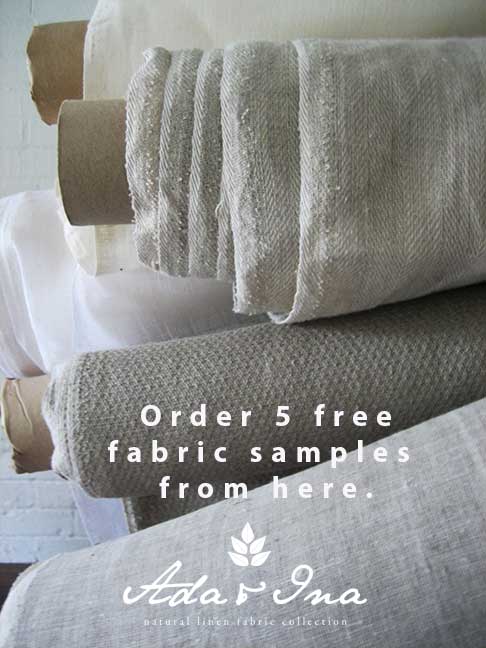Some Properties of Linen Fabric
Colour Properties
Linen varies from a creamy white to greyish brown, the depth of colour depending largely on the time and condition of retting. It may be bleached to white or near white, or to any stage between the original colour and white, and is found on the market at the various stages of bleaching.
Linen possesses a natural crispness when ironed damp, thus does not require starching, and has a natural lustre. It becomes softer and more lustrous with use and laundering, so that a fine, long used piece of linen may have almost the feel and appearance of silk. Heirloom linens handed down from generation to generation may display these qualities. Good quality linen is very durable and will wear a long time. It is readily refreshed by washing and ironing, and can be ironed at a somewhat higher temperature than cotton, but it will scorch if the iron is too hot. When it is ironed, linen has an odour somewhat like straw. Ironing develops lustre, so if a dull finish is desired, linen garments, should be ironed on the wrong side. Table damask is ironed on the right side to develop the lustre and enhance the pattern. Untreated linen feels cool to the touch and is one of our most absorbent fibres owing partially to its “wicking” ability. It absorbs very rapidly and also is quick drying so it is one of the most comfortable fabrics for warm climates. Resin finishes for crease resistance, while improving that quality, cut down on absorption and evaporation and thus decrease the cooling effect of linen.
Linen has sometimes been considered an expensive fabric, but today it is competitive in price with many other fabrics. Its durability should be taken into account when considering costs - it is the perfect choice for made to measure curtains and blinds and also for upholstery.
Strength
Flax is very strong and increases about 10% in strength when wet. The polygonal cross section of the fibres increases inter-fibre friction and hence flax yarns are not only very strong but also usually very firm. Flax is the strongest natural fibre in common use - so it can be recommended for upholstery.
Elasticity
The inelasticity of flax helps to ensure that flax fabrics and garments retain their shape. The length and strength of the fibres prevent to some extent “bagginess and bottoming”, as the fabric of the garment is so inelastic that it will normally not yield on stretching.
Moisture Absorbency and Comfort
Raw flax fibre is covered with a film of wax which prevent easy wetting of the fibres. This is often noticeable with new wiping-up towels. Usually flax has a moisture content of 10% absorbing up to 20% before feeling damp. This good moisture absorbing up to 20% before feeling damp, good moisture absorbency makes flax a comfortable fibre, as perspiration is readily and quickly absorbed. Due to the good moisture absorbency of flax and its smooth fabric surfaces it is a comfortable fibre under most conditions.
Thermal Properties
From good to very good heat conducting property of flax makes it the most heat resistant fibre in common use - so it is particularly suitable for e.g. warm curtains and blinds. It is also regarded as a “cool” fibre, for the fibres will readily conduct away body heat, if the air temperature is lower than body temperature. This is further enhanced by the smoothness of flax fabrics which allow maximum contact with the skin. Because flax is such a good conductor of heat it may be ironed with a hot iron. Damp or steam ironing assists greatly in ironing out stubborn wrinkles and creases. Even though flax has such good heat resistance, boiling water and prolonged repeated steaming are detrimental to the fibre, fabric etc. Such treatment will break down the wax and natural gums between the cells forming when fibre. A point to be remembered when laundering. Being cellulose, flax fibres ignite readily and burn quickly. Please note that we offer an optional Fire Retardant Treatment for both fabrics and curtains.
Effect of Acids
Acids will quickly weaken and destroy flax as well as cotton.

